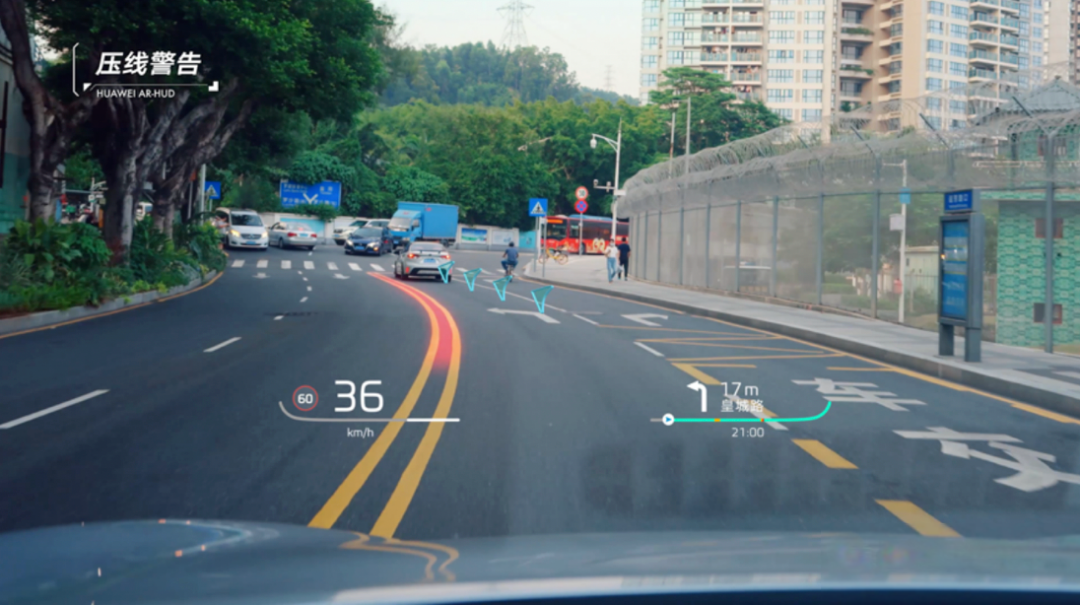Author: Little Rabbit
HUD, or Heads Up Display, is an integrated electronic display device that can project driving information such as navigation, speed, battery or fuel level, ADAS-related information, etc. onto the windshield or other display media, so that the driver can see these information without lowering their heads, improving driving comfort and safety.
HUD originated from the aviation field and was first introduced to the automotive field by General Motors in 1988, but its development has been slow. In 2020, the AR-HUD equipped on Mercedes-Benz S Class ignited the upsurge of HUD.
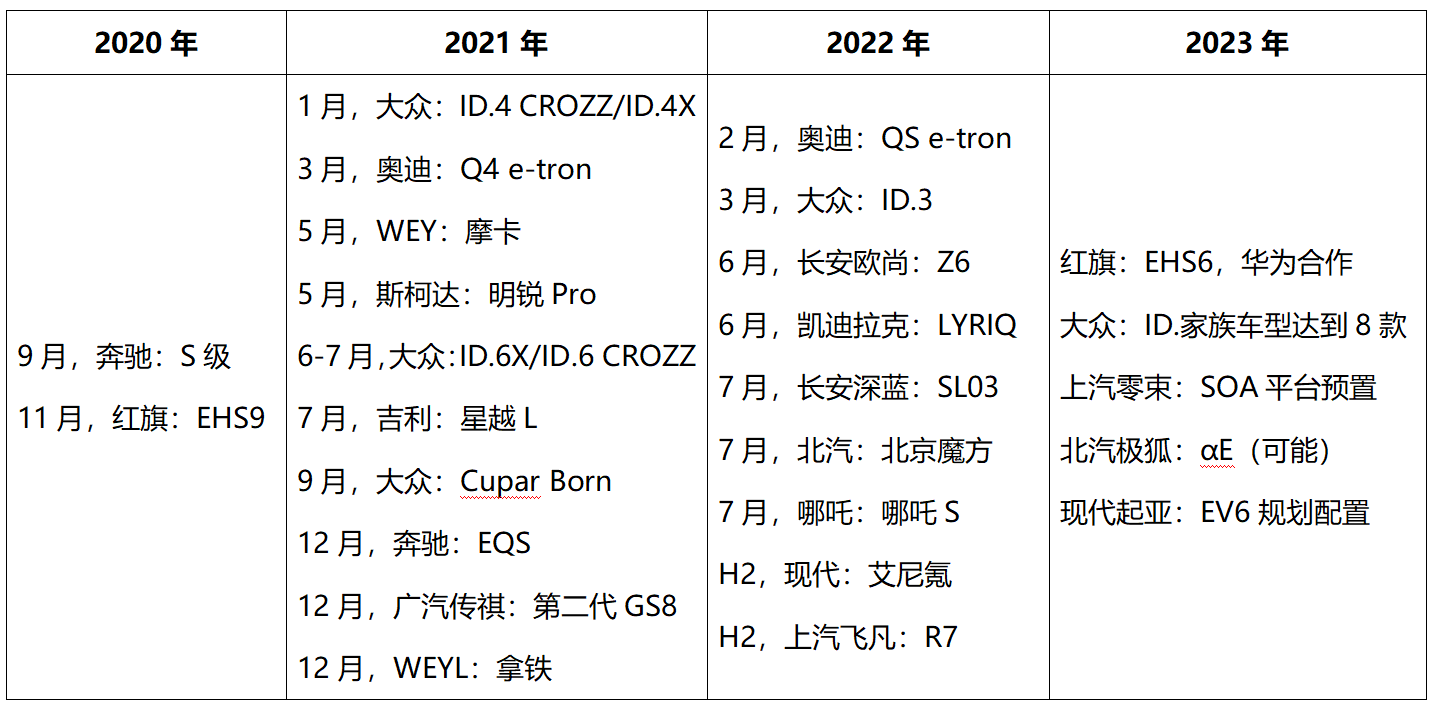
HUD Classification
Based on the different display schemes, HUD is mainly divided into three types: C-HUD, W-HUD, and AR-HUD.
C-HUD: Combiner HUD, the first-generation, is a combination of the head-up display system and requires images to be projected onto an independent semi-transparent resin glass. The imaging area is small and can only display limited information such as speed, navigation, and fuel consumption. It is mostly retrofitting with a low cost, but due to concerns about safety, it is now basically eliminated.
W-HUD: Windshield HUD, the second-generation, is a head-up display system that projects driving information onto the windshield of the car using optical reflection. The display effect is better, and it is the current mainstream solution. It has been mass-produced and can display more information, such as speed, navigation, fuel consumption, battery level, temperature, road conditions, weather, and driving warnings. It is mainly used for front fitting, with complex optical structure and high cost, and the front-fitting price in 2022 is about 1466 yuan. Representative models include Audi A8L and NIO ES8.
AR-HUD: Augmented Reality HUD, the third-generation, is an augmented reality-type head-up display system and an important window for future human-computer interaction. It has a longer virtual image distance VID (>7.5m, even infinite), a larger field of view (more than 10° * 3°), a larger virtual image size (dozens of inches), and ADAS information display. AR-HUD combines AR, ADAS, and intelligent cockpit based on W-HUD, achieves the fusion of vehicle information and real scenes, fully displays the immersive driving experience of real scenes, navigation, incoming call display, entertainment information, road conditions, and ADAS auxiliary information through the overlay of digital images and real scenes. Due to its complex optical structure and the need for strong algorithm support, the cost is high. The front-fitting price in 2022 is about 5058 yuan. The representative model is the all-new Mercedes-Benz S-Class.### Core component: PGU
The basic structure of HUD consists of information processing and projection display processing components. The former converts information into images or text for output, and the latter maps the received information onto the front windshield through the reflective projection device. Its essence is optical reflection principle, and the key lies in the imaging process. The core is PGU (Image Generation Unit), which is mainly divided into TFT-LCD, DLP, and LCoS solutions based on different projection methods.
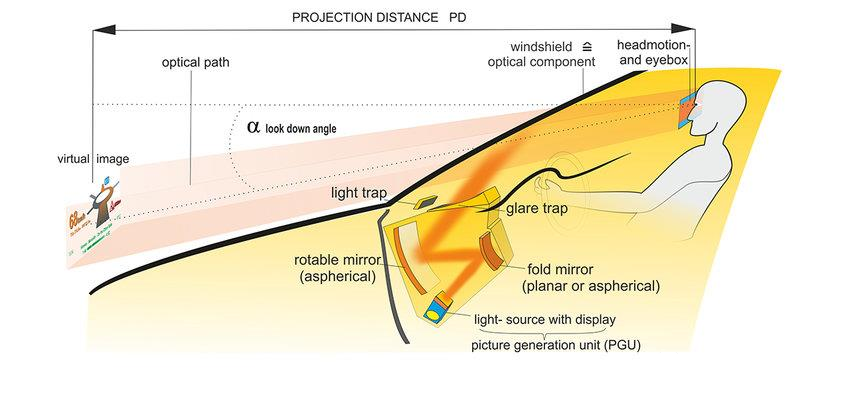
TFT-LCD: Thin Film Transistor Liquid Crystal Display, including fluorescent tube, light guide plate, polarizing plate, filter plate, glass substrate, orientation film, liquid crystal material, thin-film transistor, etc. This technology is relatively mature and inexpensive, and is widely used in W-HUD;
DLP: Digital Light Processing, including housing, motor, DMD chip. DLP digital light processing technology is a patented technology of Texas Instruments in the United States, and through the DMD integrated with hundreds of thousands of ultra-small mirrors, the volume of the tiny rotatable mirrors on the DMD surface will be controlled by the control circuit when the light passes through the DMD chip, and the reflected light will form a projected image. The image resolution produced by DLP technology is high, with high contrast and realistic imaging, which is currently the most mature technology in the AR-HUD field, but the cost is relatively high;
LCoS: Liquid Crystal on Silicon, including printed circuit board, silicon layer, reflection coating, liquid crystal layer, alignment layer, transparent electrode, and cover glass. The light source passes through the polarizing filter to reach the device. The liquid crystal serves as a gate or valve to control the amount of light reaching the reflective surface. Since the LCoS chip has high requirements for packaging and testing technology, when the light source is LED, the light efficiency is lower and the brightness is insufficient. Currently, there are fewer laser light source car-grade manufacturers with high costs, so the difficulty of mass production is relatively high. Currently, AR-HUD solutions based on LCOS are rapidly advancing and may become dark horses in the future. Domestic companies such as Huawei and Yisuke Technology are researching and producing, among which Huawei’s L cos A-RHUD has been installed on RisingAuto R7.
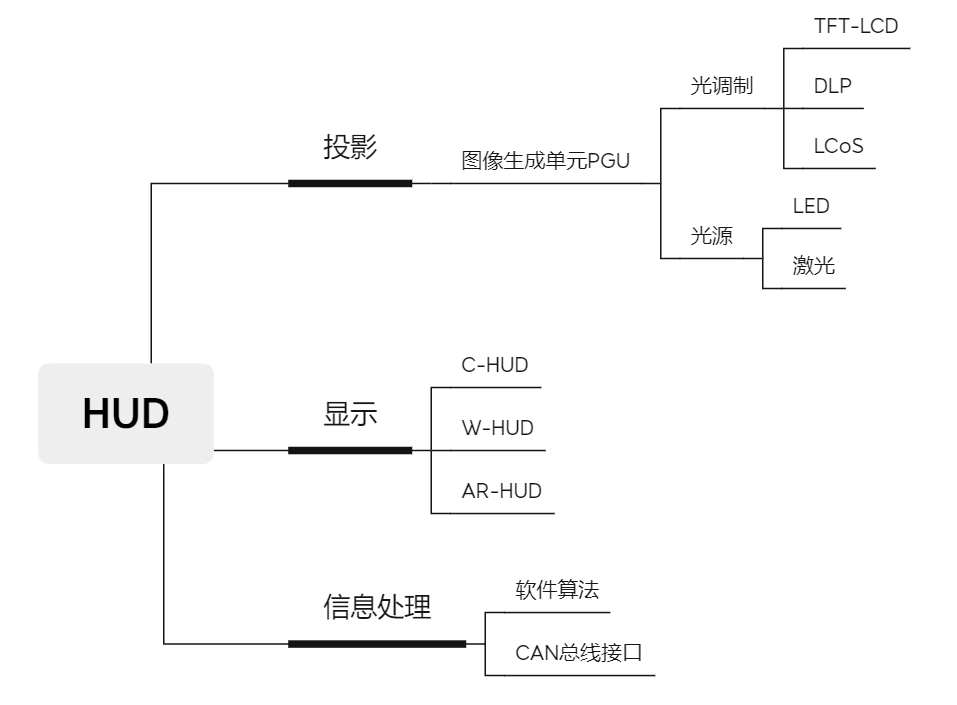
HUD Industry Chain
The upstream of HUD industry chain includes components such as image source, optical mirror, glass, software, etc., with high technological requirements and heavy reliance on imports. However, domestic enterprises are accelerating their rise at the PGU level. The middle stream is HUD manufacturers, and the downstream is the vehicle manufacturers.
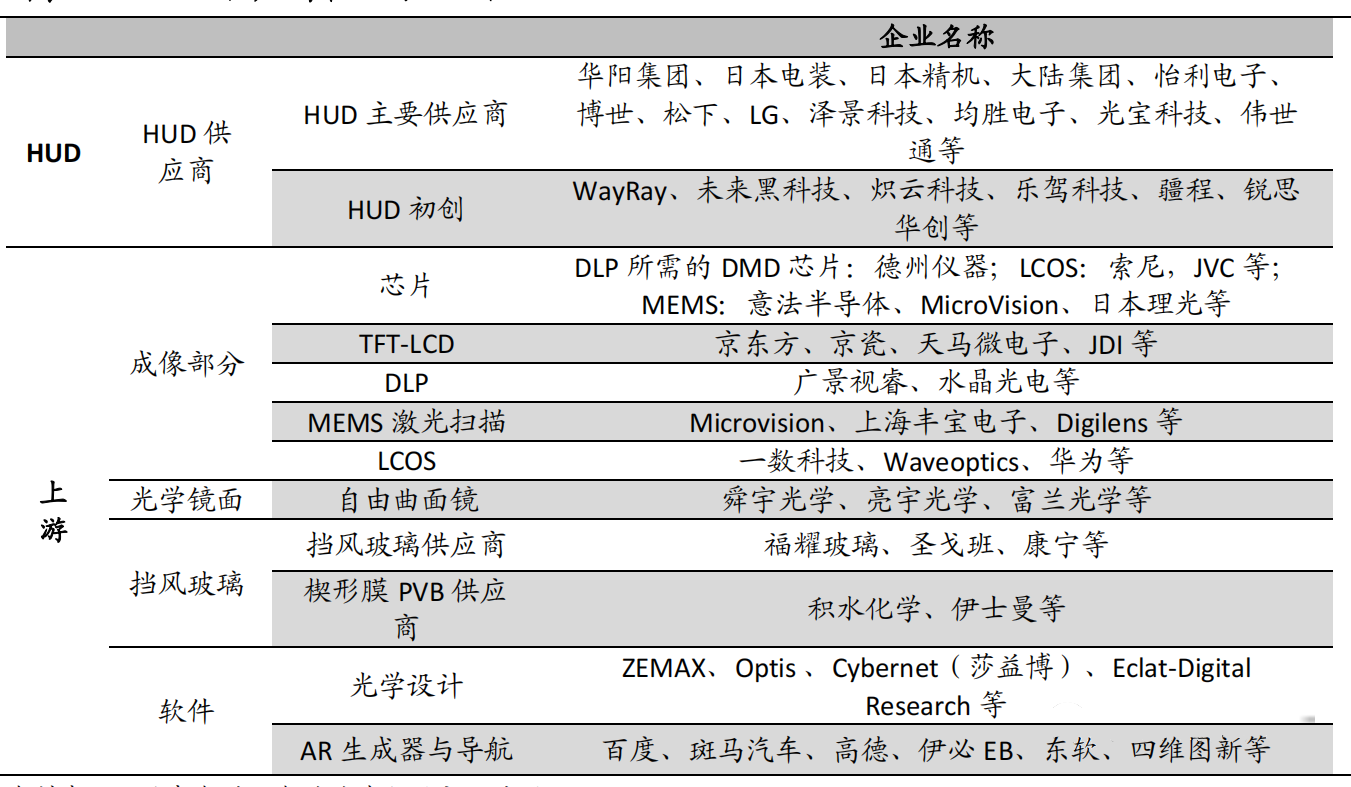
HUD Suppliers
As the intelligence of automobiles gradually increases, the maturity and popularity of ADAS technology, and HUD has become the best display method for ADAS information, improving the technology sense and driving safety of automobiles. At present, the prices of vehicles equipped with HUD are mainly concentrated in the range of over 250,000 yuan. With the gradual maturity of HUD technology and the further reduction of costs, the car-mounted HUD market is expected to further penetrate into the mid-to-low-end car market and become a standard feature of intelligent automobiles in the future.
Mainly dominated by external head suppliers, domestic HUD suppliers have been constantly seizing market share from foreign suppliers with the advantages of complete supporting facilities, low cost, and localization. Among them, Huayang Group has entered the top three of market share with a rate of 13.6%. According to the data of G-Think Tank Automotive Research Institute, the top five market share of standard HUD in 2020 were Jikken (33.3%), Continental (27.0%), Denso (20.1%), E-Lead (9.1%), Jingsheng Technology (3.6%). As technology matures and scale application reduces costs, autonomous Tier 1 suppliers are accelerating their rise. The top five market shares of domestic HUD in 2021 are Denso (39.4%), Huayang Group (16.2%), E-Lead (16.0%), Continental (11.1%), and Jikken (9.3%).
In addition, foreign HUD suppliers in China mainly serve foreign and joint venture brands such as Mercedes-Benz, BMW, and Volkswagen, while domestic suppliers mainly serve local car companies. The foreign advantage is mainly in the W-HUD field. In the AR-HUD field, domestic and foreign suppliers are on the same starting line. Considering the growth rate of China’s new energy vehicle market and the short product landing cycle in China, AR-HUD is expected to become a product that can make a breakthrough.
This article is a translation by ChatGPT of a Chinese report from 42HOW. If you have any questions about it, please email bd@42how.com.
